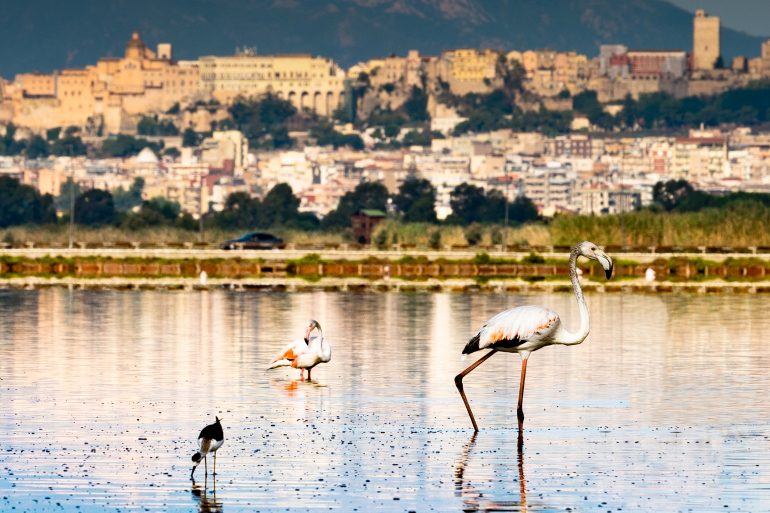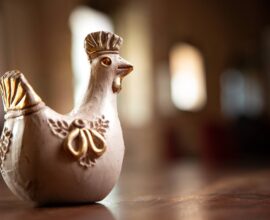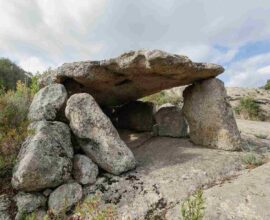Excursions in Sardinia: top 10 destinations
Excursions in Sardinia: the land of a thousand features.
Excursions in Sardinia allow you to discover all the secrets of this magical and historically rich land.
Sardinia is famous around the world for its white-sand beaches embraced by emerald green water, the island has many natural, historical, cultural and archaeological attractions. Also, not to be forgotten is the regional cuisine, a mixture of ancient peasant recipes, pastoral traditions and seafood specialities.
Sardinia is full of wonders, a land of rare beauty where you can still admire the remains of the past. Uncontaminated Mediterranean scrub and forests also fill the air with fragrance giving the region a magical atmosphere.
Sea, mountains and plains, rocky coasts and fine sand beaches, remains of ancient civilizations and modern cosmopolitan towns, the island has a lot to offer and so to not let you miss out on anything, we have suggested 10 excursions in Sardinia:
Excursions in Sardinia: 10 marvellous destinations
If you wish to know more about the natural, historical and artistic wonders of the island, here are 10 excursions in Sardinia to be done at least once in a lifetime:
1.Cagliari: you can’t plan on visiting the island and not go to Cagliari, a splendid ancient city famous for its historic, artistic and cultural heritage. The capital Casteddu, as called by the locals, is the city of sun and mistral wind surrounded by the beautiful Mediterranean sea. There are many legends and gastronomical traditions connected to the four neighbourhoods of the city: Castello, Stampace and Villanova. You can visit the cathedral of Santa Maria Assunta or the mysterious Sella del Diavolo, you can walk through the extraordinary covered promenade to the Bastion of Saint Remy and the Umberto I terrace or visit the famous Poetto beach, Cagliari has everything for you to have an unforgettable trip.
2.Molentargius-Saline park: the regional natural park Molentargius-Saline is a protected natural area established February 1999, it’s defined by the city of Quartu Sant’Elena to it’s north, some neighbourhoods of Cagliari on the west, on its south side by the Poetto beach and its east side lies Margine Rosso, a neighbourhood of Quartu Sant’Elena. It’s one of the most famous wetlands in Europe where one can observe flamingos which are nicknamed Sa Genti Arrubia in Sardinia. The wildlife also includes Cormorants, Great White Egrets, red Egrets, swamp Hawks, Fraticelli and Cetti’s Warblers. The name Molentargius comes from the Sardinian word molenti which refers to the island’s native donkey once used to pull the little carts carrying salt. Among the excursions in Sardinia, this is one of the most amazing.
3.Su Nuraxi of Barumini archaeological site: Barumini is in the southern part of Sardinia, more specifically in the historical sub-region Marmilla. Here you can visit Su Nuraxi, one of the greatly important neuralgic complexes of Sardinia, which also became part of the Unesco World Heritage in 1997. The facility surrounds a four-lobed nuraghe, a bastion made of four towers on each corner and one central tower, built between the XII and VII century BC. The Archeological area was discovered between the 40s and 50s of the 20th century by archaeologist Giovanni Lilli on horseback, an expert on neuralgic civilization, he discovered not only the town but also some remaining utensils, weapons, pottery and typical neuralgic ornamental objects.
4.Is Zuddas Grotto: the grotto in the municipality of Santardi in the Sulcis region, was discovered by speleologists in 1971. It runs through mount Meana for more or less 1650 meters and its inside temperature is of 16 degrees with almost 100% humidity. Tourists can adventure inside for about one-half kilometre and admire the extraordinary effect of constant water on the rocks. The incredible underground scenery is made of stalactites, stalagmites, columns, flows, cannula and rare pin aragonite crystals which are called “cave flowers” by speleologist. At the beginning of the route, there is the remains of a Prolagus Sardus, a mammal similar to a Hair which became extinct about 400 years ago.
5.Nora and the Archeological park of Pula: on the promontory of Pula, just a few kilometres south-west of Cagliari is Nora, the first Phoenician city in Sardinia and centre of the neuralgic economy because of its strategic location. It’s now possible to visit the Tophet, a Punic-Phoenician sanctuary, the ruins of Tanit, some artisanal-type plants nearest to the sea and the Stele of Nora, a block of sandstone with the first apparition of the word Shrdn, meaning Sardinia. The Stele is now kept in the National Archaeological Museum in Cagliari. There are also some sites dating back to the Roman era including the forum, the theatre and amphitheatre, some housing and the thermal spas. Nora is also home to the martyr of Sant’Efisio to whom is dedicated a church built in 1089.
6.Porto Flavia: in the district of Masua which resides in the Iglesias territory in the south-west area of Sardinia, is the ore port built in 1924 and is now dismissed. The structure was planned by Venetian engineer Cesare Vecelli, the name Flavia is a homage to his daughter. Before the construction took place, in 1882 the site was visited by the young Gabriele D’Annunzio, who was sent to the island on behalf of the Cronaca bizantina magazine. To build this great structure it was necessary to dig two overlapping caves in the mountain so that the Belgian mining society Veille Montagne, owner of the local mines, could easily board the heavy minerals on the ships. The facility was closed down in the sixties. Porto Flavia has now been restored and is open to anyone curious about the Inglesias territory and wanting to enjoy a splendid view of the sea from the Pan di Zucchero cliff.
7.Sette Fratelli-Monte Genis park: this park of 58,846 hectares is one of the biggest parks in Sardinia. Among the seven mountains below 1000 meters, except for the Serpeddí, the Golfo degli Angeli and punta Sa Ceraxa, there is just one inhabited area called Burcei. The Mediterranean forest is home to many plants including holm oaks, cork oaks, lentisks, strawberry trees and the virbuno tino. In the mountains there are over two thousand examples of Cervus elaphus corsicanus, the Sardinian deer considered one of the subspecies of the European deer, there are also fallow deers, wild bores, wild cats, martens and mouflon. Nature lovers will adore the Sette Fratelli Forest, perfect for hiking, bird watching and mountain bike rides.
8.Capo Carbonara protected Marine Area: is in the south-eastern area of Sardinia, Villasimius, it’s famous for being the driest area of Italy. There are fine white sand beaches and rocky coast, large green areas and famous suggestive seabeds. In Capo Carbonara there are many things to discover both in the sea and out. On the two sides of the promontory there are some of the most famous touristic destinations of the island including Villasimius and the Santa Caterina beaches, Santo Stefano, Is Traias, Usai quarry and the 9-meter tall tower of Porto Giunco, built in 1578. On the east coast of the promontory, there is the pond of Notteri, an important naturalistic oasis home to flamingos, pilgrim falcons, calenders and maragoni. Capo Carbonara is among the 10 most beautiful marine areas of Sardinia, the rich biodiversity counts a great number of marine species, Posidonia meadows and is pretty much an underwater museum because of the shipwrecks from various eras, of which some are Roman prisons and some are modern cargos lying on the seafloor.
9.Chia: or Baia di Chia, is a fraction of the Domus de Maria in the South of Sardinia and is one of the most important archaeological sites of the Island. Bithia is a settlement abandoned at the beginning of the VII century when it’s inhabitants searched for sanctuary inland so to run away from the pirates, it was initially a neuralgic town and then a Phoenician city, later it became a Punic centre and then belonged to the Romans. During the first half of the 20th century, a sea storm revealed the ruins of a Punic Tophet, some houses and the road that used to connect Chia to Nora. The splendid countryside surrounding the pond of Chia, the pond of Stangioni de su Salu and that of Campana, all of which are attended by flamingos, is made up of rocky cliffs and fine white sand beaches. Among the main points of interest, there is the Torre di Chia built in 1578 on the promontory holding that same name and can be reached by walking along the Porticciolo beach, the beautiful Su Giudeo beach and Cala Cipolla, a small beach which can be reached only by foot and also has a small path leading to the still-functioning old lighthouse of Capo Spartivento.
10.Island of San Pietro: l’isula ‘e Sàntu Pèdru is close to the Sulcis peninsula in the south-western part of Sardinia and has just one inhabited centre: Carloforte. It has been inhabited since pre-history, initially a Phoenician establishment, then Greek and later Roman. The Romans named it Accipitrum Isula meaning the “island of warbirds” or “falcon island”, referring to the presence of migratory falcons, now a protected species that nests in the Mediterranean basin. The bird’s scientific name is eleonorae falcon, it was later nicknamed “falcon of the queen”, a tribute to giudichessa Eleonora of Arborea who banned adult falcon hunting and capture of chicks during the XIV century. The origins of Carloforte are also noble, it’s foundation was dedicated to King Charles Emanuel III of Savoy. On the other hand, the islands name is a symbol of devotion to Saint Peter, who according to legend landed there in 46 AC. The high rocky cliffs along the emerald green sea, the uncontaminated nature and the fragrant Mediterranean scrubs including strawberry trees, rosemary and Aleppo pine, truly make the island a paradise and an ideal destination for hiking passionates. Every June of the year, the island of Saint Peter hosts the Girotonno, an important international gastronomical event focused on red tuna.
Would you like to have a dream-like vacation and see the most beautiful excursions in Sardinia? Discover Forte Village Resort.






